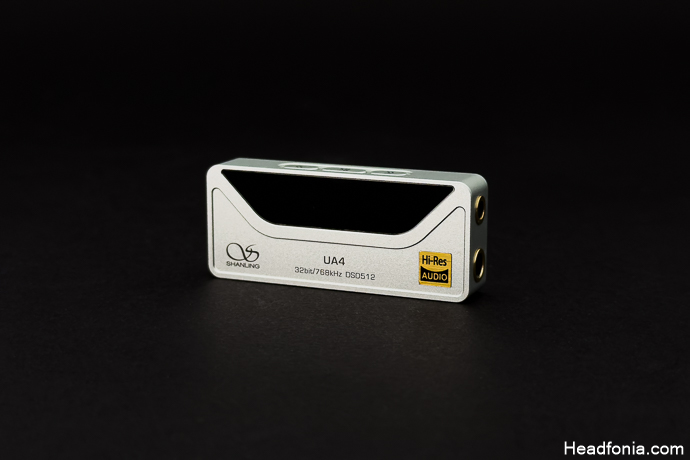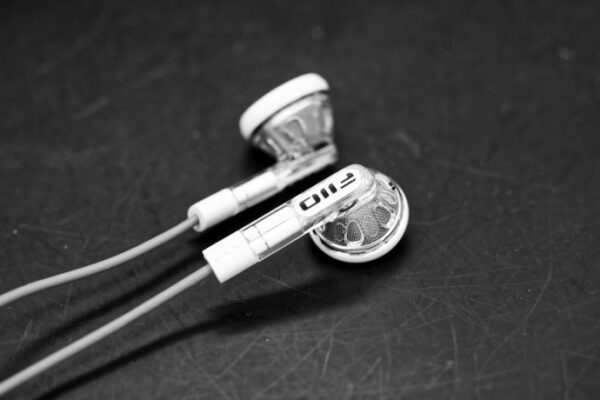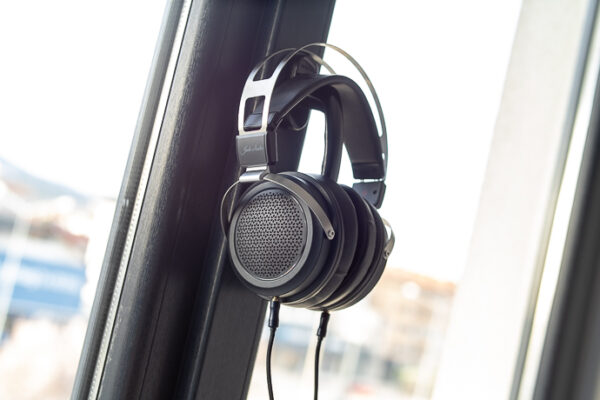If Google is showing you this page directly, click here to go to the start of the review
Shanling UA4 Portable USB DAC & AMP – Sound
If you have ever listened to a Shanling player, DAC-AMP, or other source device designed by Shanling, you know they have a distinctive ‘house-sound’ that can be described as warm, rich and textured. The same goes with the UA4; despite using an ESS DAC, which I usually link with a more neutral to analytical sound signature, the UA4 does not feel like an ESS at all. It is definitely warmer than neutral, with a larger low-end and low-mid emphasis and a more meaty midrange overall. The tonal balance is adequate, the tuning margin is set right, it does color the equipment you pair it with, especially IEMs, but in a way that is unobstructive when it comes to the technical capability. For audiophiles who enjoy the added warmth without treble taking a significant hit, UA4 could be a perfect match for you.
Overall, the signature feels richer, with meatier and more textured mids, for example, compared to Aful’s SnowyNight or Moondrop’s Moonriver2, which both come with a more neutral and colorless take on the sound.
Just like the UA3, the UA4 sounds smooth and forgiving, maintaining excellent control across the spectrum. Power-wise, UA4 is perfectly suitable for IEMs; you have plenty of juice to drive whichever IEM you would want to pair it with. Also, it has a low 0.8 ohm output impedance, so highly sensitive multi-BA IEMs can also be used without any issue. One thing I noticed while using the 4.4mm HPO, with sensitive IEMs such as the Yanyin Canon (8-ohms), I could hear a slight hiss in the background. Oddly, this is not present in 3.5mm HPO. It’s nothing serious but something to know about.

Low
The UA4 delivers a satisfying bass response that is both textured and rounded. A good dose of mid-bass imbues the signature with a pleasing warmth while the end-to-end extension remains controlled. Sub-bass follows the lead of the mid-bass, providing a well-defined weight and texture without overwhelming the presentation.
The result is a full-bodied bass response with a satisfying heft, capable of smoothly handling a wide range of genres. The bass retains a good amount of detail, ensuring a clear depiction of individual bass notes to the listener. Overall, the UA4 has an engaging bass response when paired with an adequately tuned monitor.
Mid
I believe this section is the highlight of the UA4, as it feels effortless, detailed, and smooth simultaneously. The male vocals have good authority and tonality, and the female vocals have a soft, velvety articulation with a good amount of detail retrieval. The whole midrange feels coherent, smooth, and engaging to listen to. If you are a vocal lover, I’d bet you’ll like what Shanling has done with the tuning of the UA4.
The UA4 reproduces natural instruments, much like the vocals. The strings have good note weight and texture and do not sound dull or lifeless. The upper midrange surprised me with a good extension, especially compared to the UA3. However, it is controlled, so I haven’t experienced any sibilance.
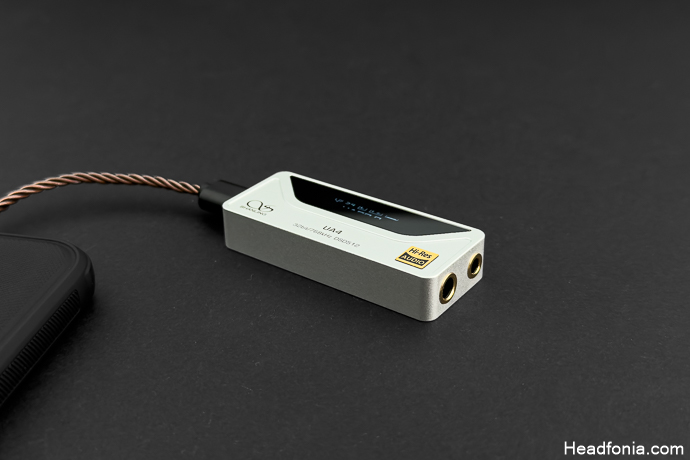
High
The UA4’s treble presentation strikes a delightful balance between clarity and smoothness. The treble is slightly recessed on the top octave but it offers a good level of detail with a natural-sounding tonality. Also, the UA4’s lower treble is more energetic than the upper treble, resulting in faster dispersion, especially for crashes within the stage. If you prefer a smoother treble response, UA4 aims exactly for that and does not feel too rolled off while doing so.
Technical Capability
The UA4 is a smooth operator; it’s highlight is its presentation, which feels effortless and smooth from top to bottom. It has a medium-sized soundstage with adequate depth. The positioning and the imaging are quite good for the price, and the UA4 layers instruments in a clean way. Also, good amount of air is present between the instruments, so, things don’t get congested fast. PRaT-wise, it does not feel particularly fast or slow and scales very well with capable monitors. My favorite pairing with the UA4 is the QoA Aviation, a budget monitor you may want to read more about.
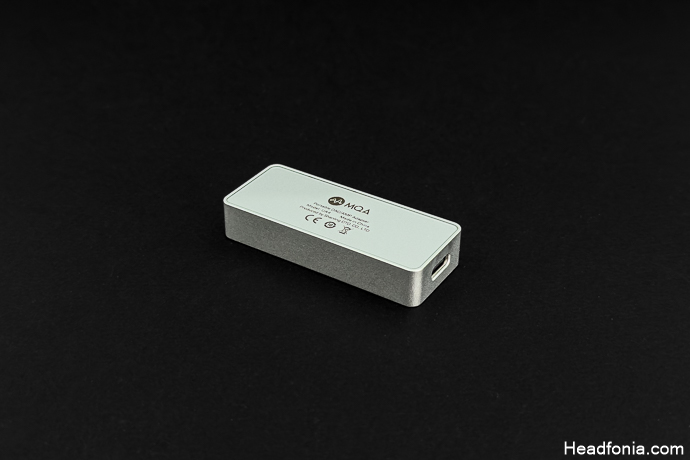
vs. UA3 ($99 USD)
Let’s start with the technical differences. The UA3 uses the AK4493SEQ, an AKM chip, while the UA4 uses the ESS chip ES9069Q. Both products use Ricore’s RT6863 OP-AMPs in a dual configuration. The UA4 has a physically more angular chassis than the UA3. Both products have an anodized aluminum chassis. The UA4 also has a 0.87-inch screen with a navigable menu. Aside from the fact that these are two devices at the same price, the screen is a detail that, in my opinion, gives the UA4 the edge over the UA3 when it comes to features. I leave the aesthetics to you.
Sound-wise, they share a similar signature, which is smooth and effortless. The UA3 has a better sub-bass extension than the UA4, as it has more impact and reaches deeper. Conversely, the UA4 has more energy in the upper mid / lower treble region, and that improves the sense of spaciousness and dynamism. The UA3’s reproduction of upper-mid-based instruments feels a tad recessed. Cymbals follow the rest of the instruments from a step back, which may be a good or bad thing, depending on your personal preference. Both of the devices have similar technical capabilities. Price-wise, they both go for a hundred bucks a pop.
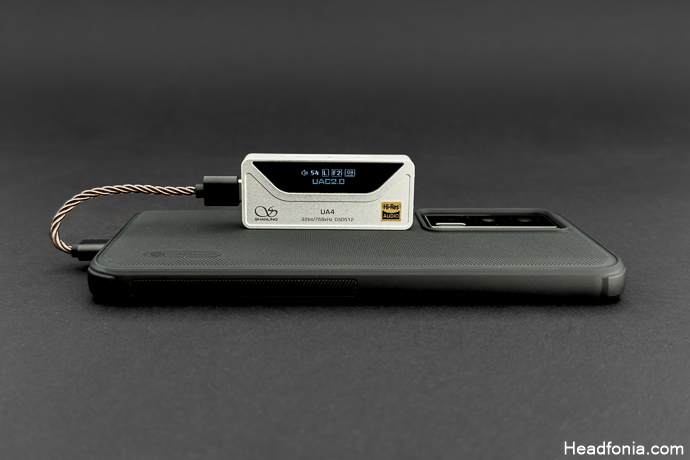
Last Words
The Shanling UA4 is a unique offering within the crowded USB DAC/AMP market with its distinctive warm and rich signature. This presentation lends a special charm, especially for audiophiles who do not enjoy neutral or analytical sources and want something more engaging. Those who seek a smooth yet detailed listening experience, along with the convenience of its compact form and intuitive menu system, will find much to appreciate in this well-crafted device.
Summary
Pros:
+ Great Price-to-Performance Ratio
+ Warm & Rich Sound Signature
+ Excellent Design
+ Excellent UI
Cons:
– Slight 4.4mm hiss
Page 1: Shanling, UA4, Packaging & Accessories, Design & Build Quality, Features & Technology
Page 2: Sound, Low, Mid, High, Technical Capability, Comparison, Last Words





